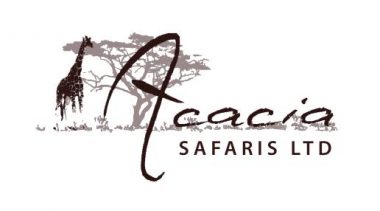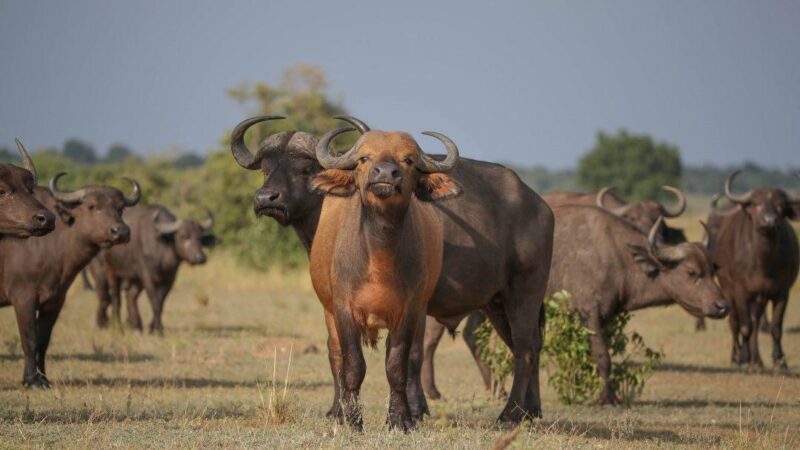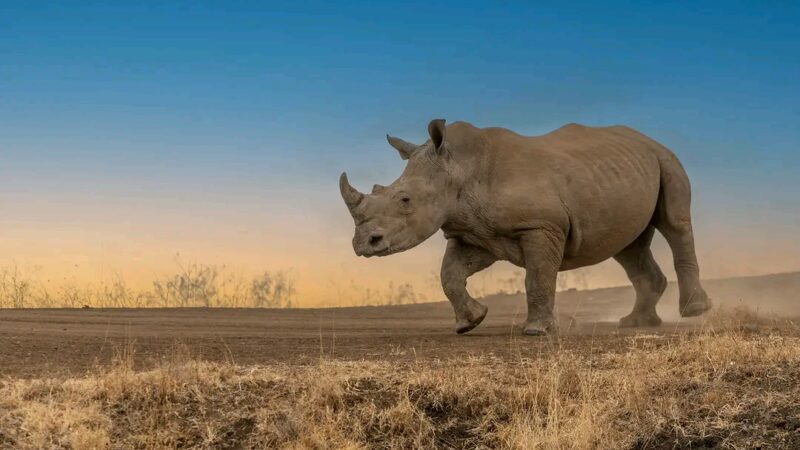Alternatively, you can visit Acacia Safaris Uganda Ltd Offices
Plot 351 B Balintuma Road
P.0 Box 29493. Kampala
Tel: +256-414-253597
Mob:+256 706-725822 / +256 777-175591
Email: tours@acaciasafari.co.ug or info@acaciasafari.co.ug
The African Big Five Animals – Experience the Big 5 Safari in East Africa
The African Big Five refers to five iconic and majestic species of wildlife that are sought after by safari-goers and wildlife enthusiasts for their sheer size, power, and beauty. These animals include the African elephant, African lion, African leopard, African buffalo, and the rhinoceros (either the white rhinoceros or the black rhinoceros). Each of these species holds a significant place in African culture, folklore, and conservation efforts. Historically, the term “Big Five” originated from big-game hunters who considered these animals the most challenging to hunt on foot due to their strength, ferocity, and elusiveness. However, in contemporary times, the focus has shifted towards wildlife conservation and ecotourism, with these iconic species serving as flagship symbols for the protection of Africa’s natural heritage. The African Big Five represents the continent’s wild spirit and underscores the importance of preserving its diverse ecosystems for future generations to cherish and admire.
Lion of Africa “King of the Jungle”
The lion, often referred to as the “King of the Jungle,” epitomizes strength, majesty, and dominance in the African savanna. As the apex predator, its golden mane and powerful roar command respect and admiration. Symbolizing courage and leadership, the lion embodies the spirit of Africa, earning it the title of the “Lion of Africa.” With its regal presence and formidable prowess, the lion stands as a symbol of resilience and power, rightfully earning its place as the sovereign ruler of the African wilderness.
African Bush Elephants
African bush elephants, the largest land mammals on Earth, epitomize the grandeur and magnificence of the African savanna. With their distinctive long trunks, large ears, and massive tusks, they command attention wherever they roam. Forming tight-knit family groups led by matriarchs, these intelligent creatures exhibit complex social behaviors and deep emotional bonds. As architects of the landscape, they shape their environment through their foraging and browsing habits.
African Buffaloes
The African buffalo, also known as the Cape buffalo, stands as a formidable symbol of strength and resilience in the savannas and woodlands of Africa. With its robust build, distinctive curved horns, and dark, shaggy coat, this bovine species commands respect as one of the continent’s most iconic and feared herbivores. Often found in large herds, African buffaloes display a remarkable social structure, with dominant individuals leading and protecting the group against predators such as lions and hyenas.
African Leopards
The African leopard, with its sleek and spotted coat, embodies the elusive and enigmatic spirit of the continent’s wilderness. Renowned for its stealth, agility, and solitary nature, this magnificent feline prowls the dense forests, savannas, and mountainous terrains of Africa with unmatched grace and prowess. Equipped with powerful limbs, keen senses, and retractable claws, the African leopard is a masterful hunter, capable of ambushing prey with precision and efficiency. Despite its solitary lifestyle.
White Rhinos
The white rhinoceros, despite its misleading name (which originated from a mistranslation of the Dutch word “wijde,” meaning wide, referring to its wide mouth), is a magnificent and iconic species native to the grasslands and savannas of Africa. Distinguished by its massive size, broad muzzle, and two prominent horns, the white rhino is a symbol of prehistoric grandeur and ecological significance. Unlike its solitary cousin, the black rhinoceros, white rhinos are often found in small groups, forming loose-knit social structures.






